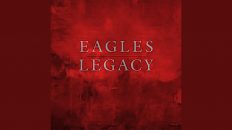| “Les feuilles mortes” | |
|---|---|
| Song by Yves Montand and Irène Joachim | |
| English title | “Autumn Leaves” |
| Written | 1945 |
| Released | 1946 |
| Composer(s) | Joseph Kosma |
| Lyricist(s) | Jacques Prévert (French), Johnny Mercer (English) |
“Autumn Leaves” is a popular song. Originally it was a 1945 French song, “Les Feuilles mortes” (literally “The Dead Leaves”), with music by Hungarian-French composer Joseph Kosma – derived from a ballet piece of music (Rendez-vous, written for Roland Petit), itself partly borrowed from Poème d’octobre by Jules Massenet – and lyrics by French poet Jacques Prévert. The Hungarian title is “Hulló levelek” (Falling Leaves). Yves Montand (with Irène Joachim) introduced “Les feuilles mortes” in the film Les Portes de la nuit (1946).
Structure and chord progression
 |
|
The song is in AABC form.[2] “Autumn Leaves” offers a popular way for beginning jazz musicians to become acquainted with jazz harmony as the chord progression consists almost solely of ii–V–I and ii–V sequences which are typical of jazz. It was originally, and is most commonly, performed in the key of G minor, but is also played in E minor and other keys. Eva Cassidy‘s version (clip on the right) is played in B-flat minor.
Its iv7 – VII7 – IIImaj7 – VImaj7 – iiø7 – V7 – i chord progression is an example of the circle-of-fourths progression.[3]
Autumn Leaves – The Song and the Chord Melody Arrangement
The key that I am using for Autumn Leaves in this arrangement is G minor. This is not the key from the real book, but it is the most common key for performing the song. The form of Autumn Leaves is AAB where A is 8 bars and B is 16 bars, so it is a 32 bar form.
The arrangement is using call-response to also allow the chords to add some groove to. This also allows for using the melody in the lower octave that often sounds a little fuller.
Learning some useful Shell-voicings for the song
To learn the chord melody we need some chords to play with the melody. The melody of Autumn Leaves is mostly a pick-up with followed by a single long note on the heavy bar. You cna think of the first phrase as an example. This makes it easy to add chords while the long note is sounding.
Most of the chords that I use here are shell voicings, so it is a good idea to check those out in G minor.
In the exercises below I have the diatonic chords of G minor first with the root on the E string and then with the root on the A string. For each exercise I start with the lowest possible chord and then move up one octave.
Chord Melody – It’s about the melody!
The first place to start with chord melody is learning the melody! In fact it would be a more appropriate name if we turned it around: Melody Chord. This is because we are playing the melody and adding the chords, not the other way around (hopefully).
In example 3, here below. I have written out the melody for the first 8 bars of the song. It is written out in the places where I want to play the melody so that I can easily fit chords under it.
Really knowing the melody well and being comfortable moving it around the neck is essential when you start making your own chord melody arrangements (which should be 20 minutes after checking out this lesson…).
Autumn Leaves Chord Melody arrangement – The A part
The A part of this song has the same structure for all phrases: a pickup and a long note. This means that the chords can be paired together and played in between the phrases.
In that way the chord pairs become: Cm7-F7, Bbmaj7-Ebmaj7, Aø-D7 and a final Gm6 chord.
When I am playing the melody I end on a note that is included in the chord and I make sure to use a fingering where I can add the chord while sustaining that note. In this case that is as much a technical as it is a musical consideration.
As you see above I use a “real” tonic minor chord so a Gm6 which is of course also what is suggested in the original composition (and the famous Miles Davis/Cannonball Adderly version as well)
The B part
The second half of the song is a bit more complicated. Of course the melody has to change a bit not to become boring so in the B part there are other melodic patterns.
In the first bar of there is no room to add a chord until the 4th beat which forces a change in the pattern and the rhythm of the chords. The next 6 bars again allows for adding the chords between phrases.
On the 9th bar of the B part the melody takes up the entire bar and I add the shell voicing under it. This first yields a complete Drop3 voicing for the Aø and then the basic shell voicing.
There is no chord under the D7 and the chord is inserted on beat 3.
The faster moving progression that follows: Gm7 C7 Fm7 Bb7 is harmonized first with a drop3 Gm7 voicing and for the rest shell voicings. This makes it impossible to sustain the melody, but it still works.
The last cadence has an Eb6 with the 6th in the melody and on the last D7 the melody is so low that I chose not to have any chords at all. Since the melody is moving all the time that is not much of a problem, and as I already said: The Melody is more important!
This is a blue print for your own chord melody arrangements
I hope you can have fun playing through my arrangement and start to make it your own with variations and changes to the chords!
For me, the most fun part of chord melody is making your own arrangements! I think you should start trying to figure out how to do so as fast as possible. You can play other peoples arrangements as well, but there is no reason why you should not be creative with your own harmonizations and voicings!











